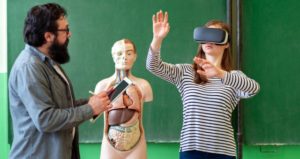
Combating the Curve
Lecturing is one of the most traditional methods of teaching in higher education. On any given day, there are hundreds of lectures being delivered in

Lecturing is one of the most traditional methods of teaching in higher education. On any given day, there are hundreds of lectures being delivered in

We live in a time of never-before held access to information, which means educators must compete with a wide-ranging array of media for the finite

I found the article, “Testing and Assessment: Looking in the Wrong Places” by Dr. Caristi (Faculty Focus, 11 Sept. 2019) interesting. But, if I am

Most of us teaching at the college level like to read. We read professional materials, and we read for pleasure. We know firsthand that much

There is a vast pedagogical literature spelling out the benefits of student engagement and active participation (1). A recent meta-analysis study of 225 active learning

Regardless of one’s academic discipline or the courses that we teach, college faculty members share a responsibility to prepare our students for success in our

Isaac Newton first conceptualized the idea of gravity when an apple fell on his head. This moment was simple, but inspirational—with a huge impact on

With written communication becoming increasingly multimodal—from newspaper websites to your social media feed to your learning management system’s announcements page—researchers and practitioners alike have made

When I began designing my course activities, I needed a model that would include all modalities of the learning processes. As my blueprint, I chose

Why did the chicken cross the road? To get to the other side. Why did the chicken cross the playground? To get to the other
Get exclusive access to programs, reports, podcast episodes, articles, and more!